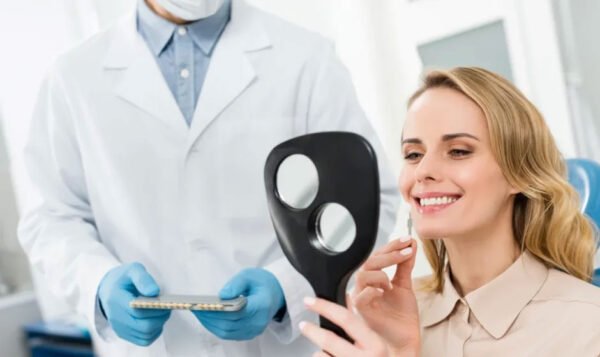How TMJ Chiropractors Are Using Latest Methods to Treat Dysfunction?

Tired of that nagging jaw pain? You are not alone. Millions of people struggle with TMJ disorder, a condition that can make everyday activities like eating and talking a painful ordeal. TMJ chiropractors are taking a holistic approach to address the root cause of TMJ dysfunction.
This condition causes various distressing signs which can ruin one’s normal life. This blog will show how these chiropractors employ contemporary approaches toward effectively treating and stopping this condition.
The temporomandibular joint (TMJ) acts as a hinge enabling your jaw to move smoothly in multiple directions. Symptoms associated with the TMJ disorder include jaw pain, earache, headaches, clicking sounds while moving the jaws etc. Consequently, even yawning could appear challenging due to such signs.
TMJ Dysfunction Causes
These can be attributed to some causes that lead to TMJ dysfunction like:
- Injury: Trauma through the head or jaw may make them misalign, thus resulting in TMJ damage.
- Arthritis: Similar to other parts of the body attacking, arthritis also attacks this joint causing TMJ pain and stiffness.
- Stress: In the long run, stress leads to teeth grinding resulting in damage to TMJ.
- Poor Posture: Poor posture leads to poor alignment of jaws hence exerting extra pressure on TMJ.
How Chiropractors Treats TMJ Dysfunction?
Chiropractors specialize in treating issues related to the musculoskeletal system which includes the TMJ. They use various techniques to address underlying problems behind TMJ condition and assuage its accompanying pains.
- Manual Adjustments: As one of the most typical techniques TMJ chiropractors employ, manual adjustments include. Such adjustments are used to realign the jaw and relieve tension in surrounding muscles. Chiropractors can manipulate the jaw and neck with care to return it to its normal functioning to reduce pain and increase movement.
- Soft Tissue Therapy: TMJ dysfunction can also be treated by employing soft tissue therapy by chiropractors, who usually massage or stretch around muscles near the TMJ to relieve stiffness, thereby enhancing the flow of blood in those areas. In this way, soft tissue therapies can greatly reduce inflammation, thus quickening healing.
- Exercises and Stretches: The chiropractors typically prescribe manual adjustments plus soft tissue therapy to their patients suffering from TMJ disorder while at home, which technique also includes certain specialized exercises and stretches. These exercises aim at strengthening muscles around tmj, improve posture and enhance overall joint functioning.
Innovative Techniques in Chiropractic Care
Over the years, chiropractic services have introduced new innovative approaches to handling TMJ disorders to improve the delivery of services.
- Instrument-Assisted Adjustments: Some chiropractors employ special instruments when making precise adjustments to people’s TMJs. At least such gadgets enable them to manipulate their patients’ jaws efficiently, rendering them less pained during the process but achieving better outcomes.
- Laser Therapy: Laser therapy is a non-invasive treatment modality some chiropractors take to reduce pain and inflammation within(inside). Usually, low-level laser lights are used during this treatment to stimulate tissues around that joint, reducing discomfort caused by it.
- Ultrasound Therapy: Using sound waves, ultrasound therapy can get into tissues surrounding the TMJ and decrease inflammation to encourage healing. This is useful for severe TMJ dysfunction not remedied by other treatments.
- Digital Imaging: Chiropractic has adapted modern scanning techniques like X-rays and MRIs that give accurate information about the origin of TMJ disorder. This precision allows for targeted treatment plans.
- Postural Correction: Proper health of the Temporomandibular Joint depends on good posture. Postural exercises and education are often integrated into chiropractic care to help align patients correctly.
- Neuromuscular Re-education: This involves retraining the brain and muscles’ cooperation more optimally. It may alleviate muscle tension and improve jaw function.
- Acupuncture: Some chiropractors may offer acupuncture as palliative care for managing pain and inflammation.
- Combining Treatments for Optimal Results: Chiropractic treatment of TMJ can be more effective if combined with other treatments. For instance, many individuals get relief from chiropractic adjustments, physical therapy, and wearing mouthguards to prevent clenching or grinding teeth.
Conclusion:
TMJ chiropractors use the most advanced techniques in treating this dysfunction by combining manual adjustments, soft tissue therapy, and innovative technology to ease pain. These causes of TMJ dysfunction are better understood by chiropractors, who can provide personalized and effective care utilizing a holistic approach.
In case you experience pain resulting from TMJ, it is worth considering seeking help from a chiropractor for medical examination and advice on how to cope with it as well as live without anxiety.



